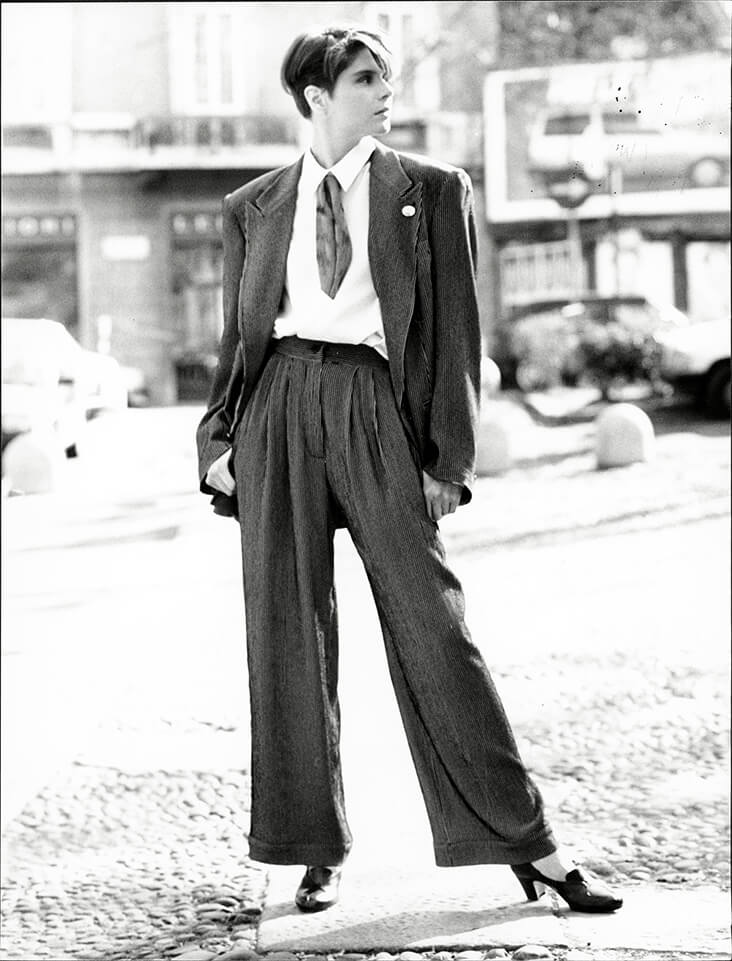Remembering Giorgio Armani
Giorgio Armani has left us. Even typing those words feels surreal, as if fashion itself has lost one of its most significant pillars, the sleek column that held up decades of style. Armani wasn't just a designer—he was a visionary who reshaped the way we all think about elegance, about what it means to look refined, and about the beauty of restraint.
For me, Armani was more than a name stitched on a label. He was a teacher from afar, guiding my own sense of style, while I was never one for the understated, Armani gave the feeling that the right silhouette could say it all. Sometimes it was just that perfect shoulder needed to tell the style story. His tailoring whispered where others shouted, and yet that whisper echoed louder than any passing trend. While Armani, in many ways, could be said to be a minimalist, you need only look at his couture creations for Armani Prive to challenge that idea.
Armani’s Revolution
When Armani launched his label in 1975, the fashion world was still under the spell of structure. Shoulders were padded, suits were rigid, and elegance was a stiff affair. Then came Armani—the architect of softness. He deconstructed the suit, releasing women (and men) from armour and instead offering drape, ease, and fluidity. His clothes moved with the body, not against it.
It was Armani who made women in trousers look not just powerful, but sensual. It was Armani who gave men the soft, unstructured jacket that became the uniform of confidence. Hollywood noticed—Richard Gere in American Gigolo turned Armani into an international byword for cool. Soon after, the red carpet became an Armani runway, his gowns as smooth and sculptural as marble.

A powerful, classic runway moment—Armani silhouettes draped in calm confidence.

A minimalist, unlined Armani jacket—a second-skin tailoring that underscores the quiet revolution of soft suiting.

A serene, greige-toned menswear look from Spring 2025—a whispered palette of sophistication.
The Armani Effect on Style
Armani’s genius was subtle. He wasn’t about fashion as costume or excess; he gave us fashion as lifestyle. His palette—those greys, taupes, creams, and midnight blues—was borrowed from nature, but arranged like a symphony of understatement. He understood that elegance comes not from complication, but from clarity.
And yet, let’s not mistake simplicity for blandness. Armani’s work was precise, architectural, and deeply sensual. He taught us that quiet could be powerful. That a suit could liberate, not restrain, that clothes could communicate authority and grace without ever raising their voice.

The iconic “greige” palette embodied in soothing neutrals captures Armani’s stylistic poetry.
My Own Style, Armani’s Shadow
If I lean toward clean lines, if I have a weakness for tailoring that feels effortless, if I sometimes prefer a muted palette even while I flirt with maximalist flamboyance—it’s Armani’s influence whispering in the background.
Armani gave me permission to value restraint. In my own fashion writing and in my wardrobe, I often celebrate drama, texture, colour, and flair. But Armani taught me that the greatest drama sometimes lies in stillness, in the perfectly cut lapel, in the fall of a trouser that doesn’t scream but seduces.
He showed me that elegance is not an era but a way of seeing. Even as trends came and went—logos, streetwear, Y2K nostalgia—Armani stayed Armani. He never chased the zeitgeist; instead, he stood like a beacon of timelessness. And that consistency shaped me. It reminded me that style is not about following the calendar but about curating your own vocabulary of dress.

ARMANI INSPIRED LOOK
The Final Bow
With Armani’s passing, the world has lost more than a designer. We’ve lost an architect of elegance, a minimalist poet, a man who proved that fashion could be both quiet and radical. His influence is stitched into every unstructured blazer, every flowing gown, every pared-back palette that whispers sophistication.
And though he is gone, Giorgio Armani’s legacy lives in our closets, on our shoulders, and in our imaginations. He remains, always, the maestro of understatement.
For me—and for fashion at large—his absence will be felt like a silence after music. But oh, what music he gave us.

CIAO FOR NOW, J.ANDREW JACKSON
